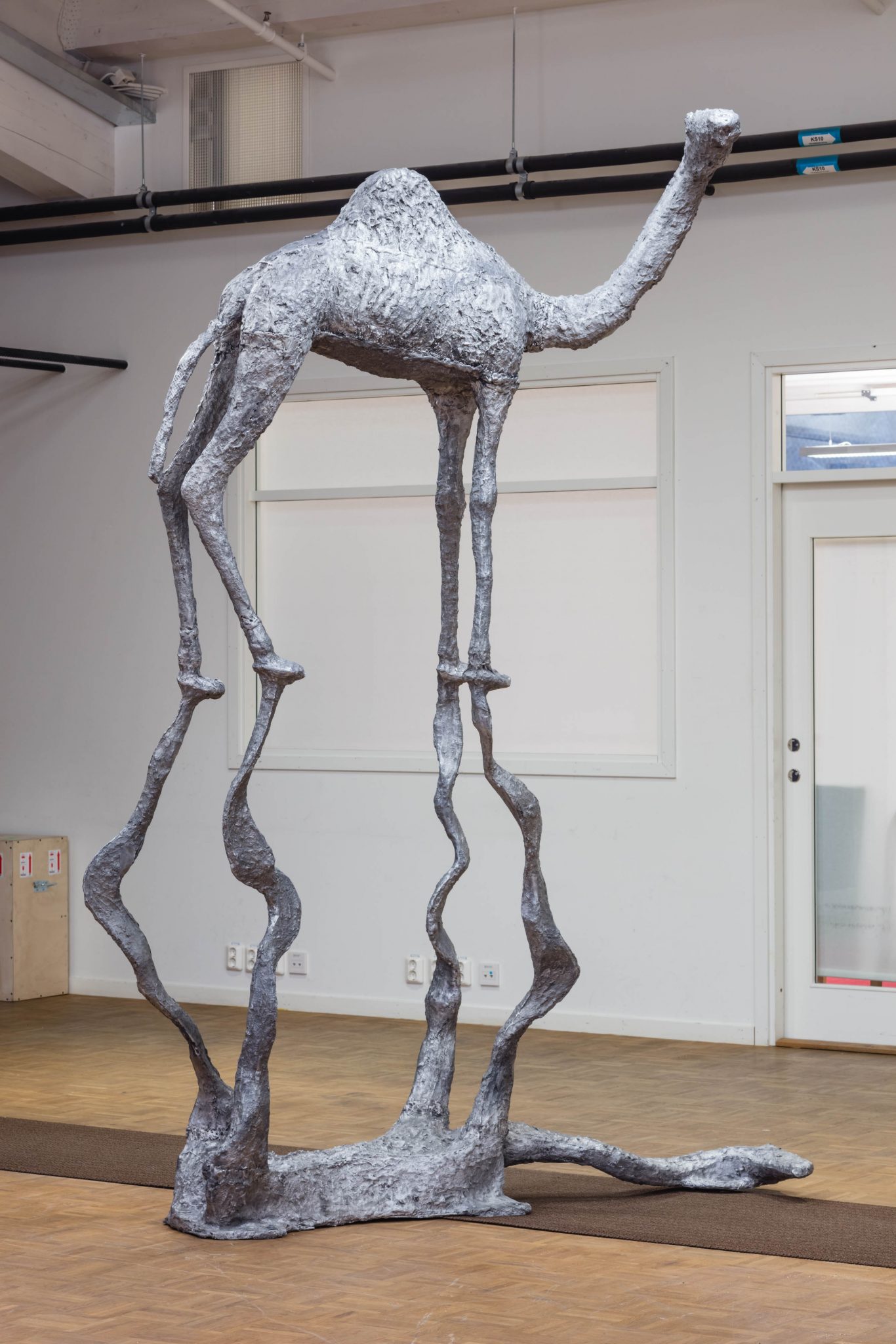How It’s Made is the first and, as it turns out, the last exhibition at Carl Kostyál’s new venue in Nacka, a municipality east of Stockholm. Having climbed two flights of exterior spiral staircase on my visit on a dark January afternoon, I am told that the gallery – situated in the former headquarters of the fashion company Gant, its circa-1990s open-plan office space mostly left untouched – will move again, since the area is undergoing real-estate development.
In the exhibition, which was externally curated by Matt Williams, the central piece is arguably Ed Atkins’s almost-24-hour-long video How It’s Made (2016), lending the show its title. For this work, the artist, known for his high-definition hyperreal animated videos, has assembled silenced footage from the ongoing Discovery Channel programme of the same name. The show broadcasts manufacturing processes of everyday products, from paper to mascara. In Atkins’s collage of videos, ripped from YouTube, which he collected while waiting for HD files to render, the outcome is omitted: we never get to see the commodified, satisfyingly final product.
Most works in the exhibition speak about their own production. Some look more final than others, for instance Anne Imhof collaborator Eliza Douglas’s To cancel out humanity (2016), a painting of three hands handing out invisible visiting cards. The photorealist hands were outsourced to an anonymous Chinese artist, and subsequently connected by Douglas with broad pink brushstrokes. In contrast, Piotr Łakomy’s Twin (2017) appears more crude. It consists of two almost identical wall-hung collages, each comprising a beaten-up-looking wooden door covered in crumpled metal honeycomb sheets and a pair of attached golf balls suggesting eyes. Other works literally change over time, such as Nina Canell’s Gum Shelf (2017) in the shape of a minimalist rectangular volume made from pistachio tree rubber, which slowly gives in to the force of gravity. Yuri Pattison’s peace mode (default) (2017) offers a floor-mounted server and adjacent monitor, upon which crowd-simulation software orchestrates small humanoids moving across a greyish-blue globe floating in a black universe. Jean-Marie Appriou’s Trouble (2017), a sculpture in the shape of a dromedary standing atop a reversed second camel that looks like its own drained mirage, is there to remind us of the real and its constructed mirrored double, or perhaps vacant simulacra in hyperreality.
Most works date to the past two years. One of the few exceptions, albeit from an artist whose career has revived lately (with institutional shows in Germany, London and Paris), is Lynn Hershman Leeson’s Lynn Turning Into Roberta (1978), a digitised 16mm film documenting the artist’s transformation into her alter ego. This work is a timely reminder that long before selfies, artists were already occupied with identity politics and constructions of self. In the same space, Yngve Holen’s Bagatelle (2017), a section of a CT scanner, conjures morbid attempts at self-perfection as we turn into commodities ourselves.
How It’s Made, then, combines physical manufacturing processes with hints at identity politics and a Postinternet attitude. Most works on view are products fresh from the artists’ studios, and the opportunity to offer a more self-critical or even pathological view on processes of commodification is missed. We hardly learn how things – or artworks – are made, nor does the exhibition often take up the banal yet riveting profanity of consumer products and their manufacture, which are pointed to in Atkins’s video. Perhaps the clearest instance of these concerns is Violet Dennison’s Sick Building Syndrome (2017), a dissected Elkay EZS8L water dispenser wall-mounted on copper foil, dysfunctional with its guts out while displaying its inner workings. Another, corollary case is the gallery’s imminent move due to further gentrification in the area, exemplifying, today, how a city is made.
How It’s Made at Carl Kostyál, Stockholm, 7 December 2017 – 14 January 2018
From the March 2018 issue of ArtReview
